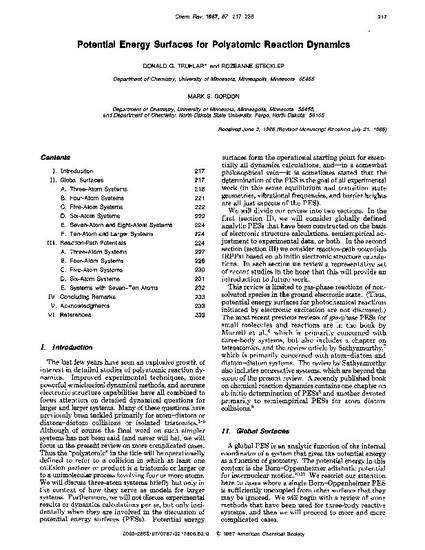
The last few years have seen an explosive growth of interest in detailed studies of polyatomic reaction dynamics. Improved experimental techniques, more powerful semiclassical dynamical methods, and accurate electronic structure capabilities have all combined to focus attention on detailed dynamical questions for larger and larger systems. Many of these questions have previously been tackled primarily for atom-diatom or diatom-diatom collisions or isolated triatomics. 1- 5 Although of course the final word on such simpler systems has not been said (and never will be), we will focus in the present review on more complicated cases. Thus the "polyatomic" in the title will be operationally defined to refer to a collision in which at least one collision partner or product is a triatomic or larger or to a unimolecular process involving four or more atoms. We will discuss three-atom systems briefly but only in the context of how they serve as models for larger systems. Furthermore, we will not discuss experimental results or dynamics calculations per se, but only incidentally when they are involved in the discussion of potential energy surfaces (PESs). Potential energy surfaces form the operational starting point for essentially all dynamics calculations, and-in a somewhat philosophical vein-it is sometimes stated that the determination of the PES is the goal of all experimental work (in this sense equilibrium and transition state geometries, vibrational frequencies, and barrier heights are all just aspects of the PES).
Available at: http://works.bepress.com/mark_gordon/57/
